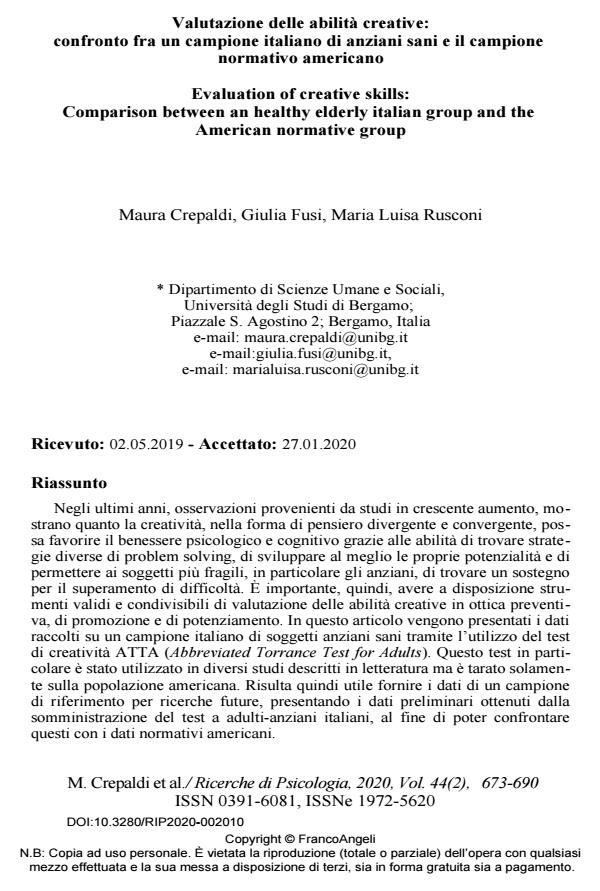Evaluation of creative skills: Comparison between an healthy elderly italian group and the American normative group
Journal title RICERCHE DI PSICOLOGIA
Author/s Maura Crepaldi, Giulia Fusi, Maria Luisa Rusconi
Publishing Year 2020 Issue 2020/2
Language Italian Pages 18 P. 673-690 File size 242 KB
DOI 10.3280/RIP2020-002010
DOI is like a bar code for intellectual property: to have more infomation
click here
Below, you can see the article first page
If you want to buy this article in PDF format, you can do it, following the instructions to buy download credits

FrancoAngeli is member of Publishers International Linking Association, Inc (PILA), a not-for-profit association which run the CrossRef service enabling links to and from online scholarly content.
In recent years, growing studies evidence shows how creativity, in the form of divergent and convergent thinking, can foster psychological and cognitive well-being thanks to the ability to find different strategies in problem solving, providing a field in which it is possible to develop potentialities and in which fragile subjects, in particular the elderly, can find support for overcoming difficulties. For this purpose, it is important to have valid and shareable tools for evaluating creative skills in a preventive, promoting and enhancing perspective. This article pre-sents data collected by administering the creative test ATTA (Abbreviated Tor-rance Test for Adults). This test is used in several studies in the literature but vali-dated on an American sample. It is useful to provide a reference sample for fu-ture research, presenting preliminary data obtained from the administration of the test to elderly Italians adults, in order to be able to compare these with the American normative data.
Keywords: Creativity, ATTA, TTCT, divergent thinking, convergent thinking, adults, aging.
Maura Crepaldi, Giulia Fusi, Maria Luisa Rusconi, Valutazione delle abilità creative: confronto fra un campione italiano di anziani sani e il campione normativo americano in "RICERCHE DI PSICOLOGIA " 2/2020, pp 673-690, DOI: 10.3280/RIP2020-002010